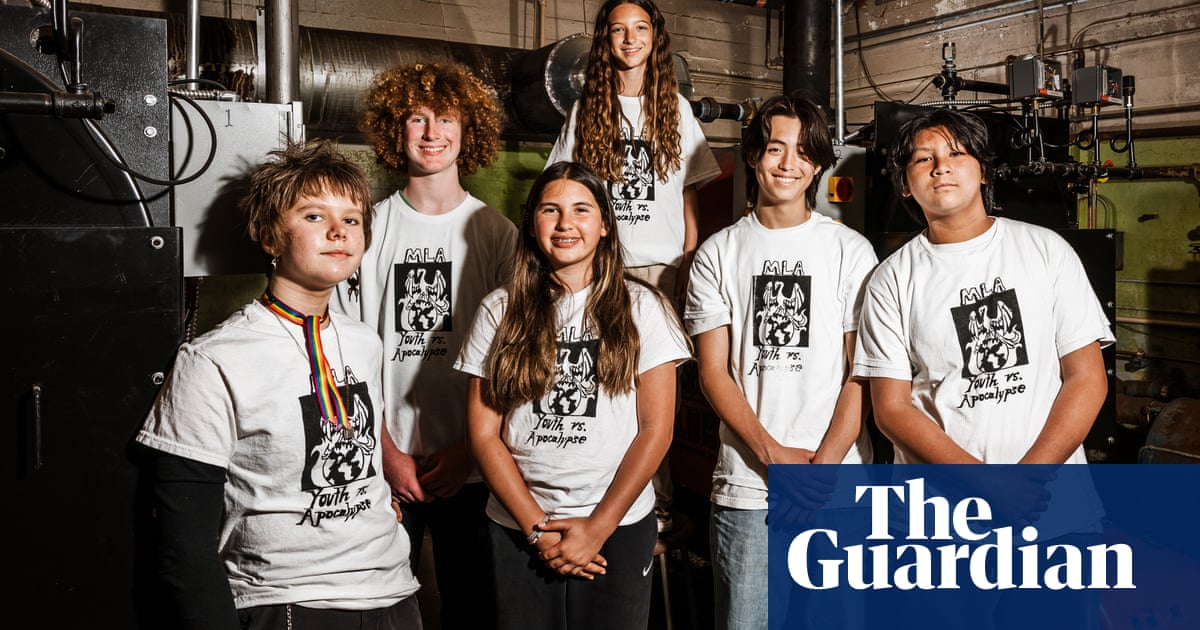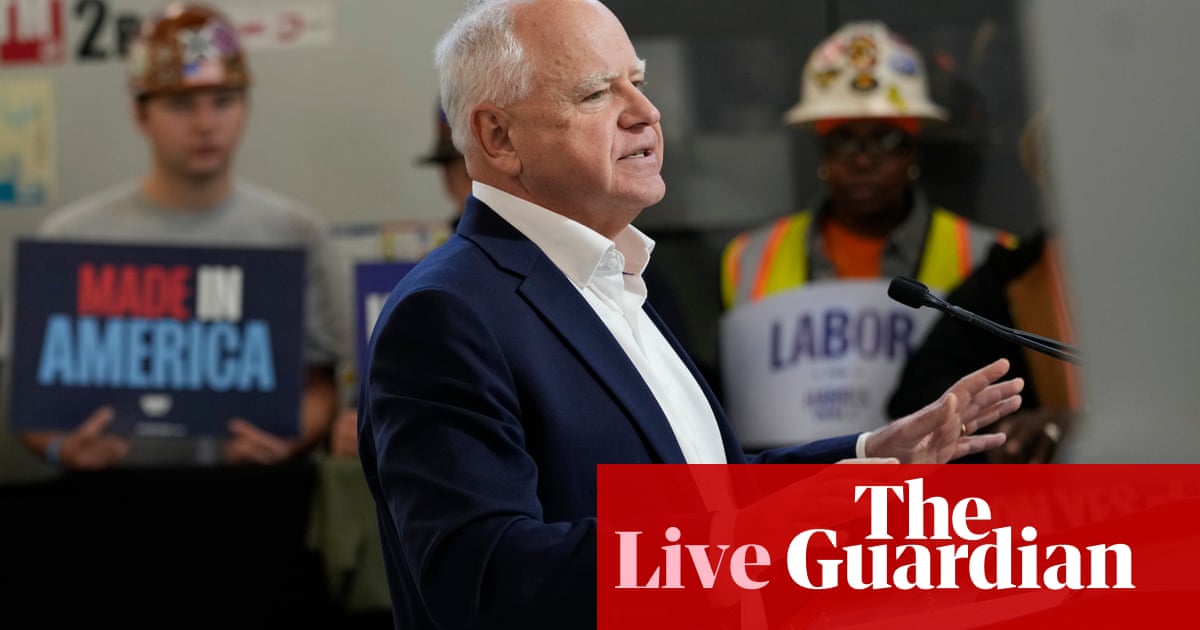When temperatures creep past 90F in Oakland, California, the mini air-conditioning units in the classrooms at Melrose Leadership Academy can’t keep pace. So the middle schoolers in MLA’s chapter of the climate justice group Youth vs Apocalypse started doing some extra homework: they researched, planned and proposed installing a heat pump on campus.
Heating buildings accounts for 10% of CO2 emissions globally, according to the International Energy Agency. Heat pumps have become an increasingly popular clean-energy technology because they can both heat and cool using electricity, reducing greenhouse gas emissions.
The students proposed using a portion of a $735m school-district bond to invest in a long-term solution that would also shrink their carbon footprint. After a campaign marked by persistence, the teens, first profiled by the local news outlet the Oaklandside, succeeded. Now, their efforts have become a blueprint for what the district wants to implement at other schools.
Augie Balquist, age 13: It started last year when it was very, very hot and we really didn’t have any AC. We had these mini AC units, but the power would go out because there were too many of them going at once. It wasn’t very practical. And the only heating we had was our gas boilers. We realized that they’re producing so much carbon that’s really hurting the environment.
I went about researching and then made a presentation about heat pumps. We started off with talking about the Oakland Unified school district’s action resolution they made in 2020 that says we need to achieve 100% clean electricity and phase out the use of fossil fuels. We thought that the district should honor the action resolutions they had made.
Next was our estimate of just how much gas our boiler was burning: 32 metric tons of CO2 every year. We also explained how heat pumps work.
Our estimated cost was $5m out of the school’s bond money of $32m. It was going to be more expensive than just putting in a new AC. And our boiler was just put in recently, so they didn’t want to pull it out because it was so new.
Then we wrote up a petition.
Jayden Tern, 14: We went to all the classrooms and presented, and we got 250 signatures. It was basically the entire middle school, and we got a bunch of elementary schoolers.
Yuji Hong, 14: We spoke at community meetings that were held in our cafeteria, where parents, staff, students and school board members could discuss the bond money and how to use it for the school.
Lyra Modersbach, 13: After that, we went to school board meetings. There was a lot more pushback there than at the community meetings. One of the board members told us to go back and learn more and stop trying to talk about things we didn’t know, which was completely untrue, because we had done a lot of research to present to them.
Augie: I think it was just because we’re young, and they assumed that we didn’t know anything.
Juliette Sanchez, 13: We persisted and made sure we showed up to pretty much every meeting, talked about it and showed that we put research into what we were saying.
Augie: We went to probably 10 meetings. Then the school board invited us to visit the office of the architects designing the upgrade for the school building. They showed us the cost of different heat pump options and their efficiency relative to gas boilers.
One really important thing they told us is our school’s exact carbon output for the past couple years, which was way more than we estimated. It was the equivalent of somewhere around 250 transatlantic flights of carbon every year. We also learned that the heat pump really didn’t cost that much more than keeping our gas boiler, which requires a lot of upkeep.
A lot of the pushback had been people saying there was not enough money. But the architects told us that there was enough funding.
Someone from the district who was hesitant at first ended up supporting us at the very end to convey to everybody else how good heat pumps are.
Lyra: There was a final Zoom meeting with the project advisory committee, and Augie and I were there to inform the district about what we’d learned in the meeting with the architects. When we learned the campaign had succeeded and we would get the heat pump, it was exciting.
Juliette: I learned that no matter our age, we can make a difference through what we do, and we can use our voice to impact the world in a positive way.
Augie: Sometimes it’s difficult, but you’ve just got to keep persisting and eventually you can do whatever you put your heart to.
Lucy Downed, 13: That’s why I was interested in Youth vs Apocalypse, because we care about the climate and how our actions affect others.
Lyra: Something I hope politicians do is really look at what they’re doing to the world and start doing what they need to do as fast as they can, because we don’t have much time and we need to do everything we can at this point.
Augie: They should listen to the young people’s voices, because we’re the people who are going to be growing up with these problems. If you listen to young people, we can provide solutions that are going to help everyone in the long term.
-
My DIY climate hack is a series about everyday people across the US using their own ingenuity to tackle the climate crisis in their neighborhoods, homes and backyards. If you would like to share your story, email us at [email protected]



